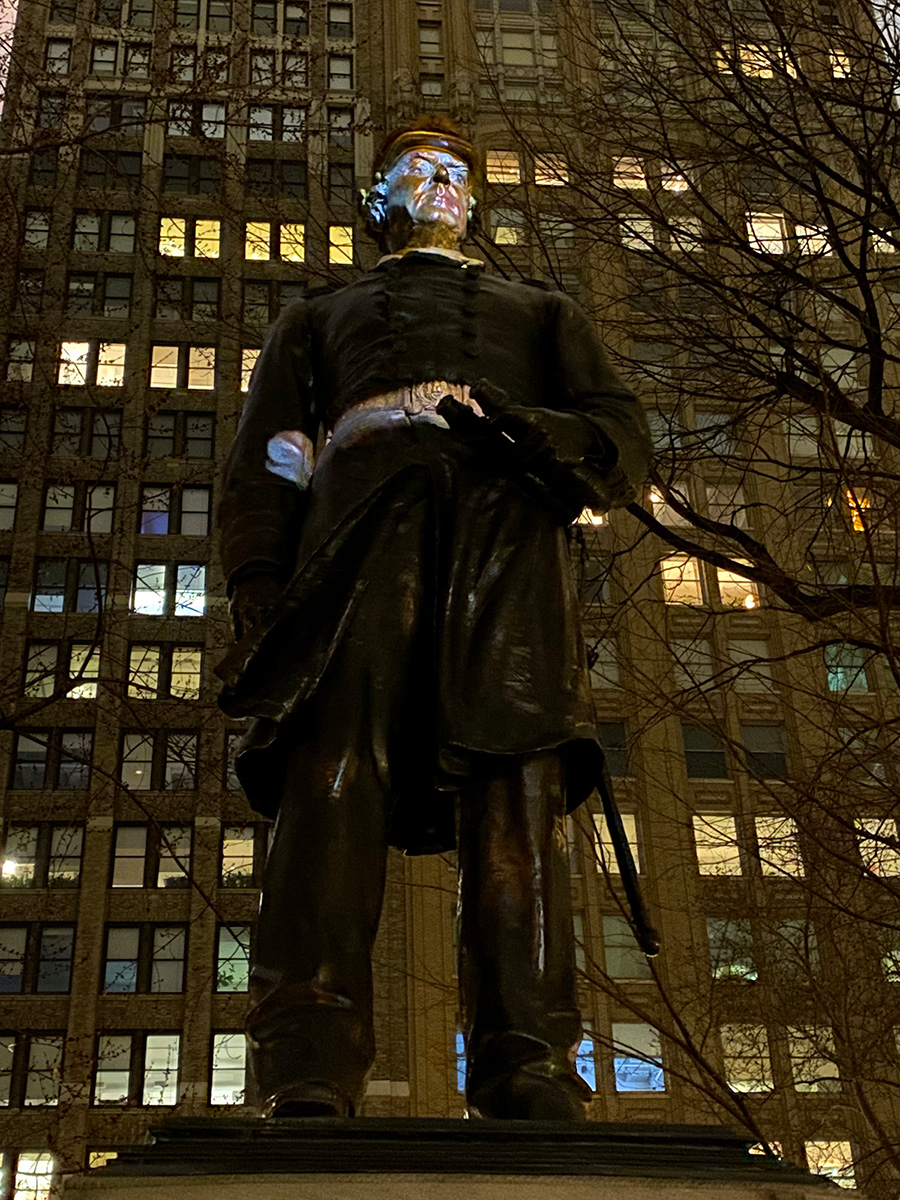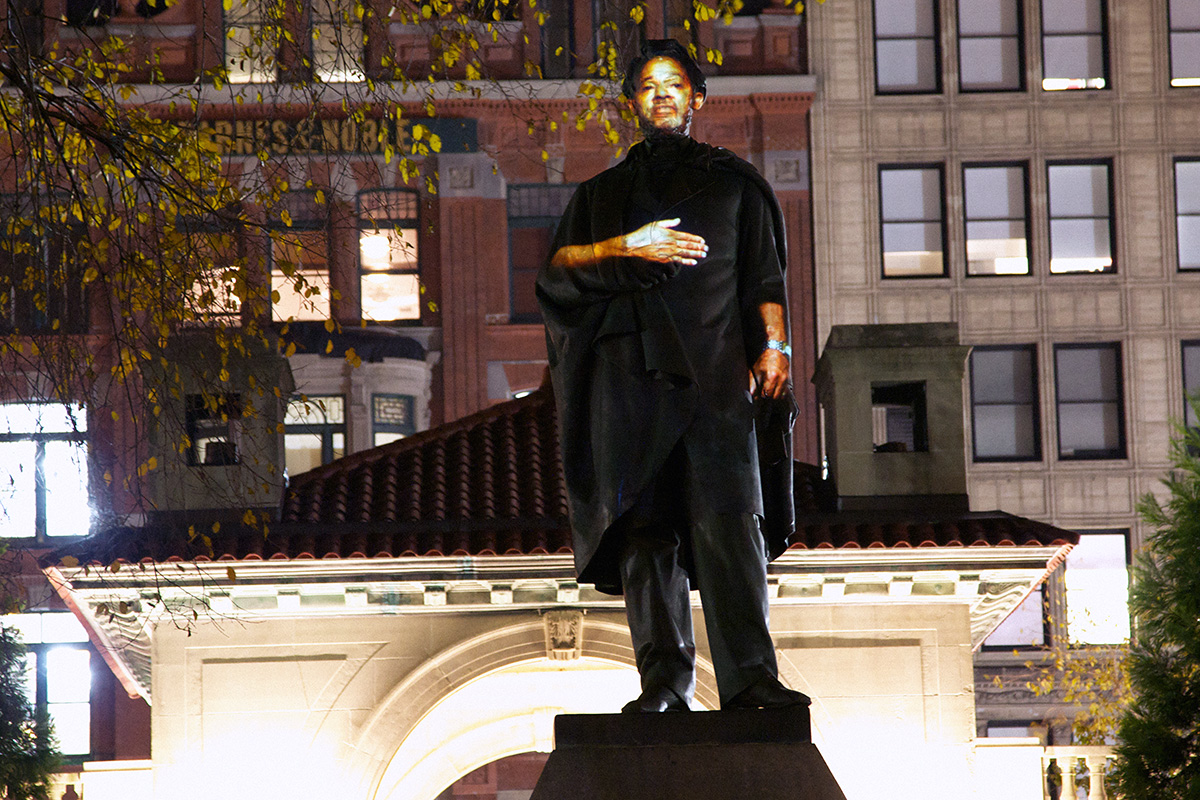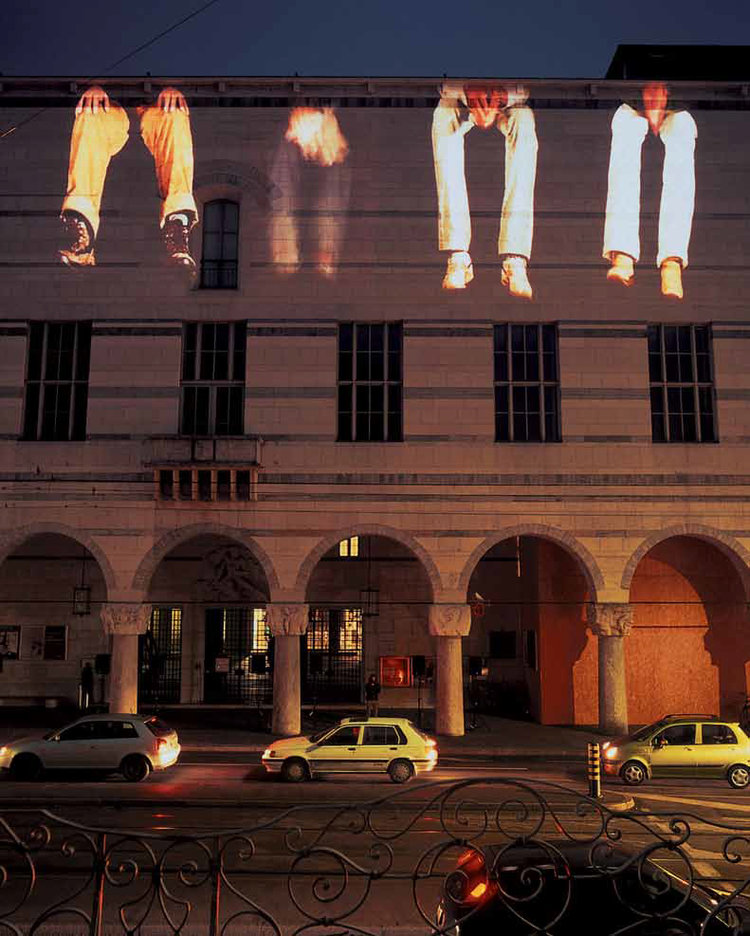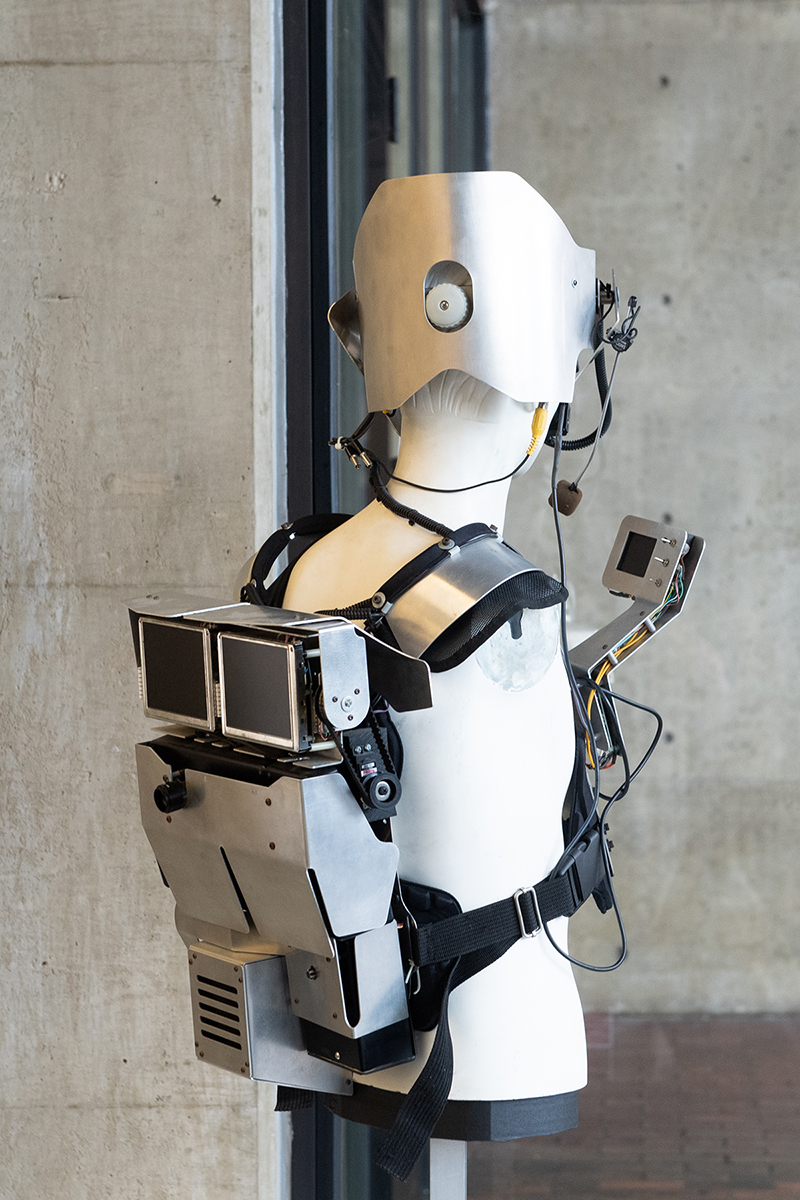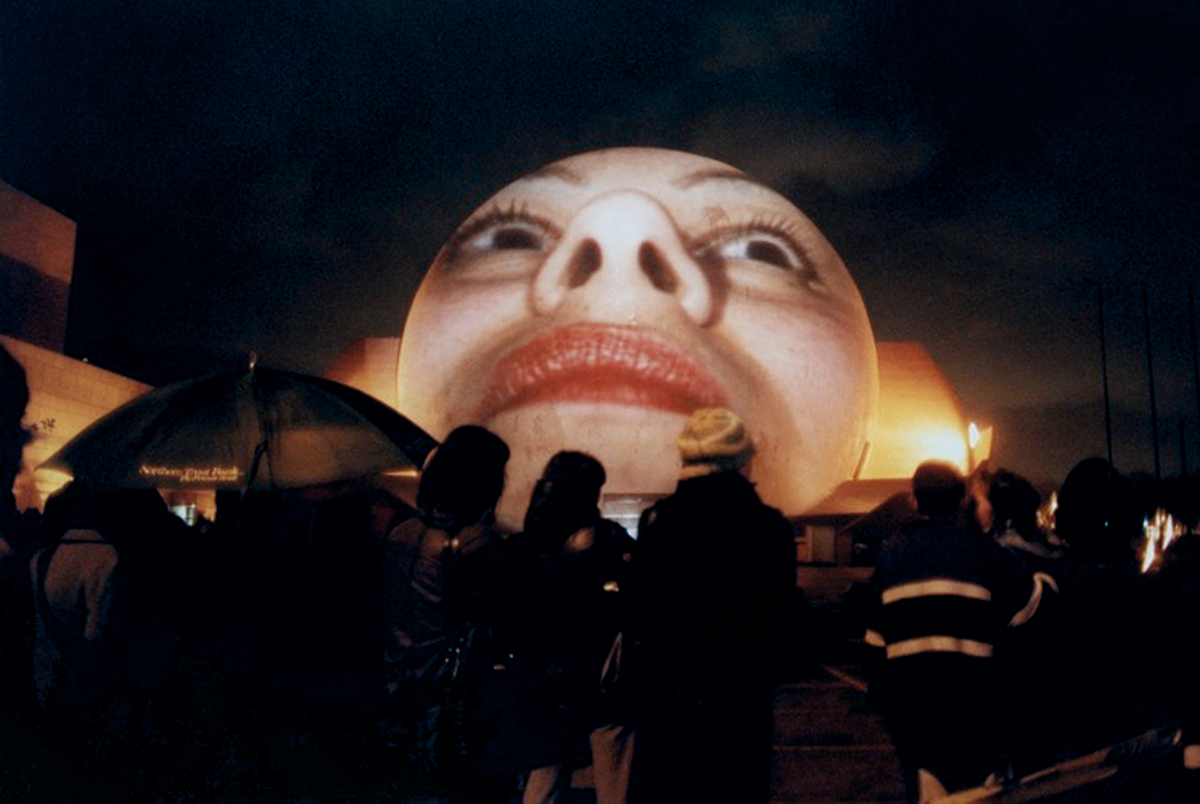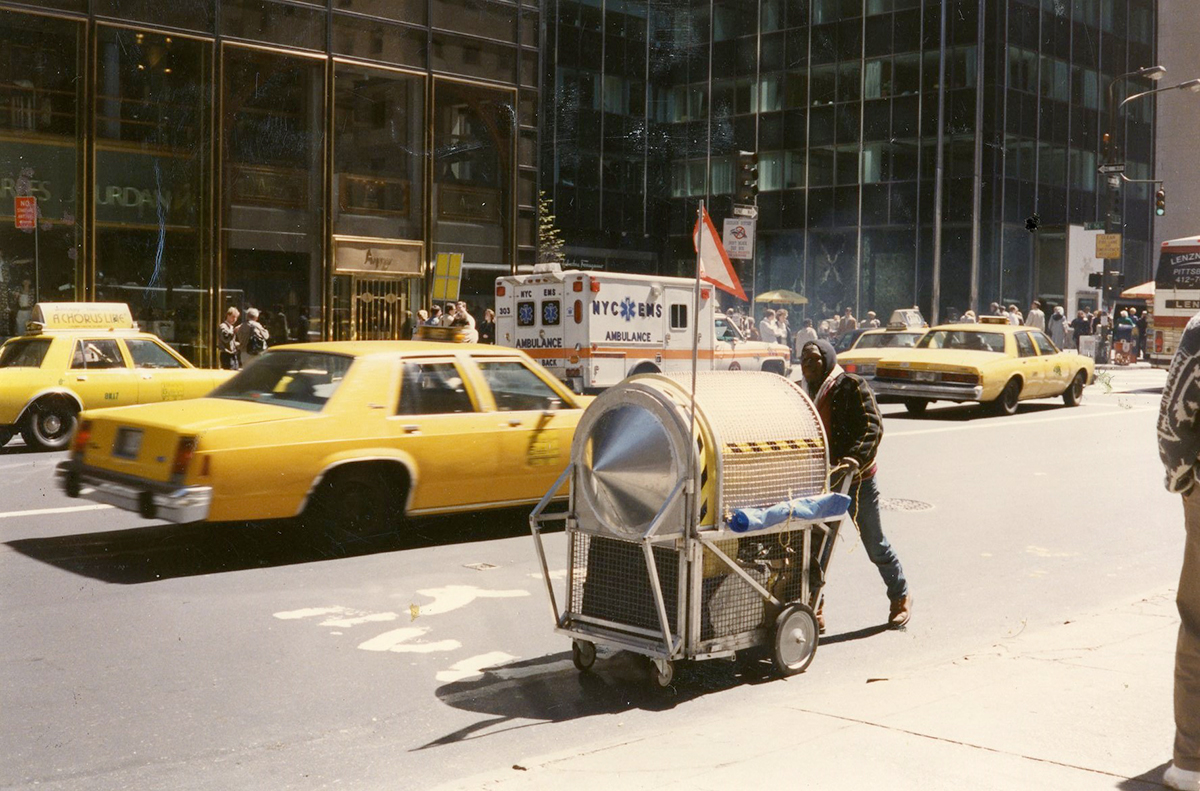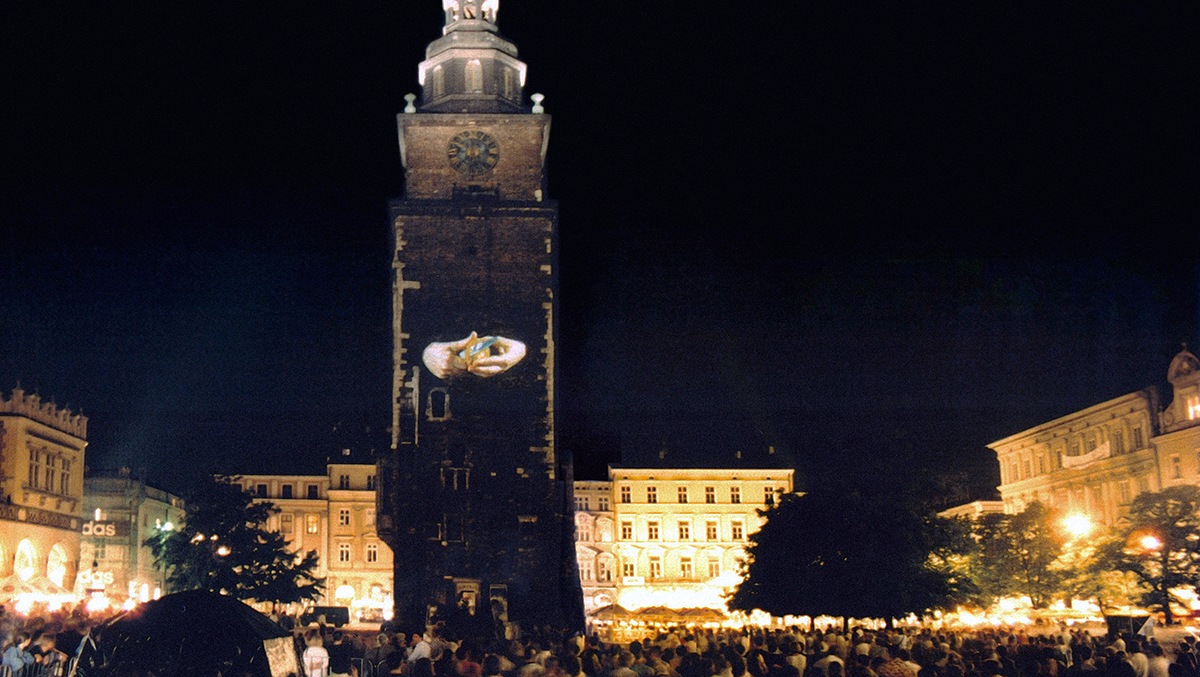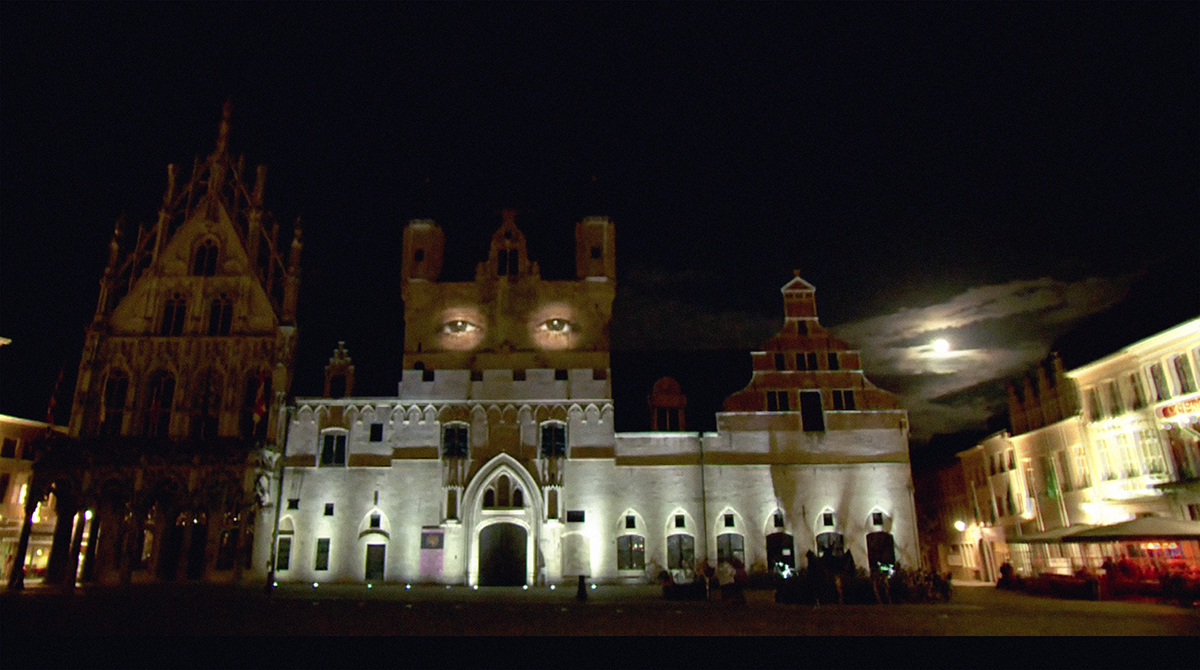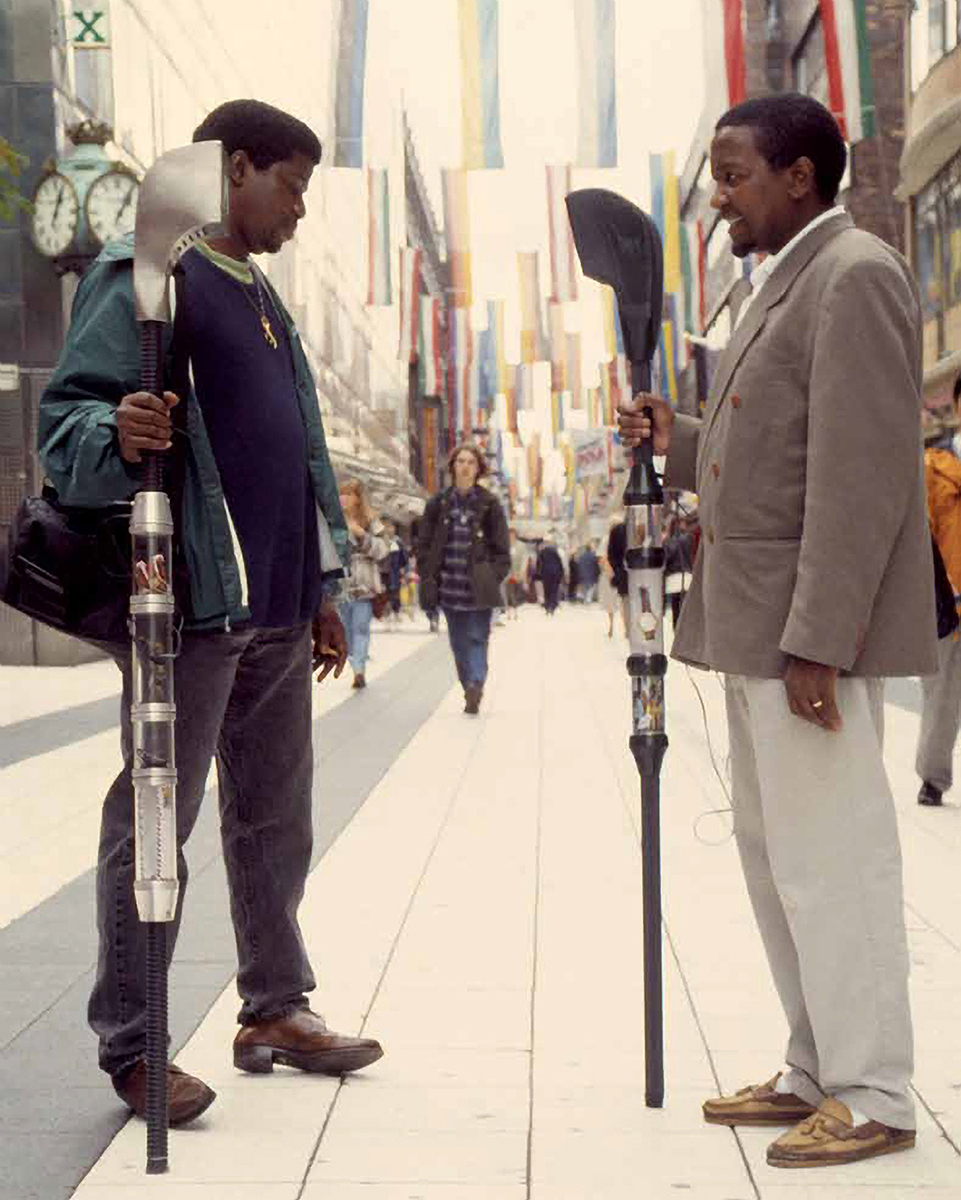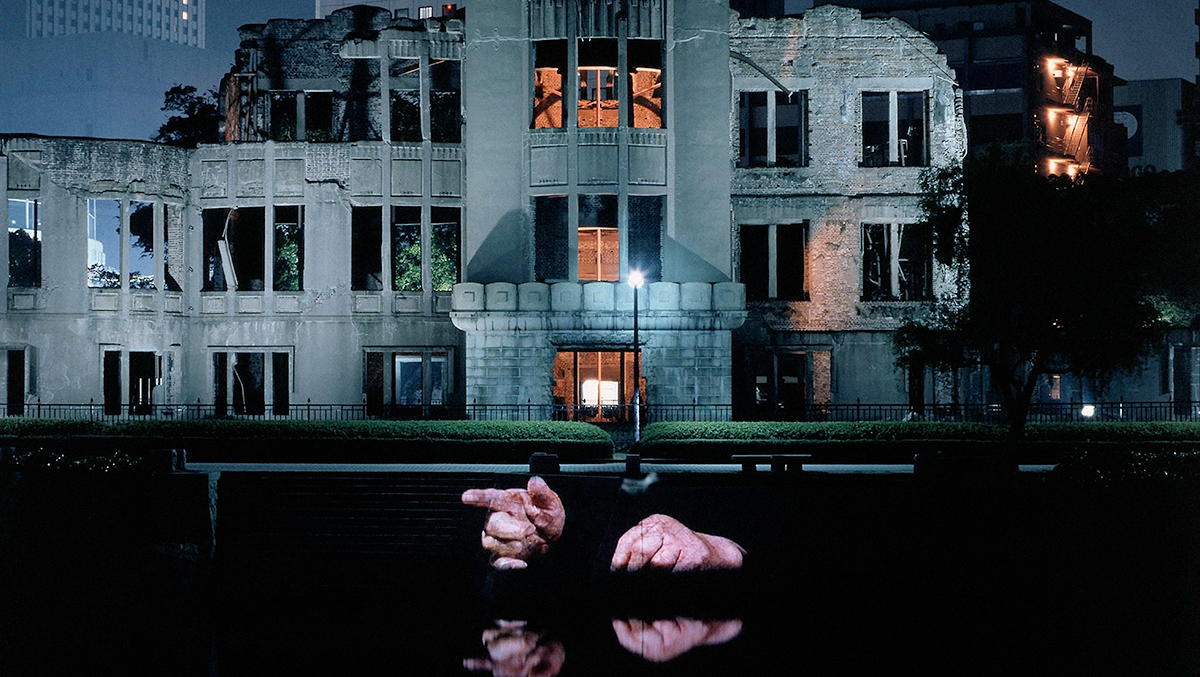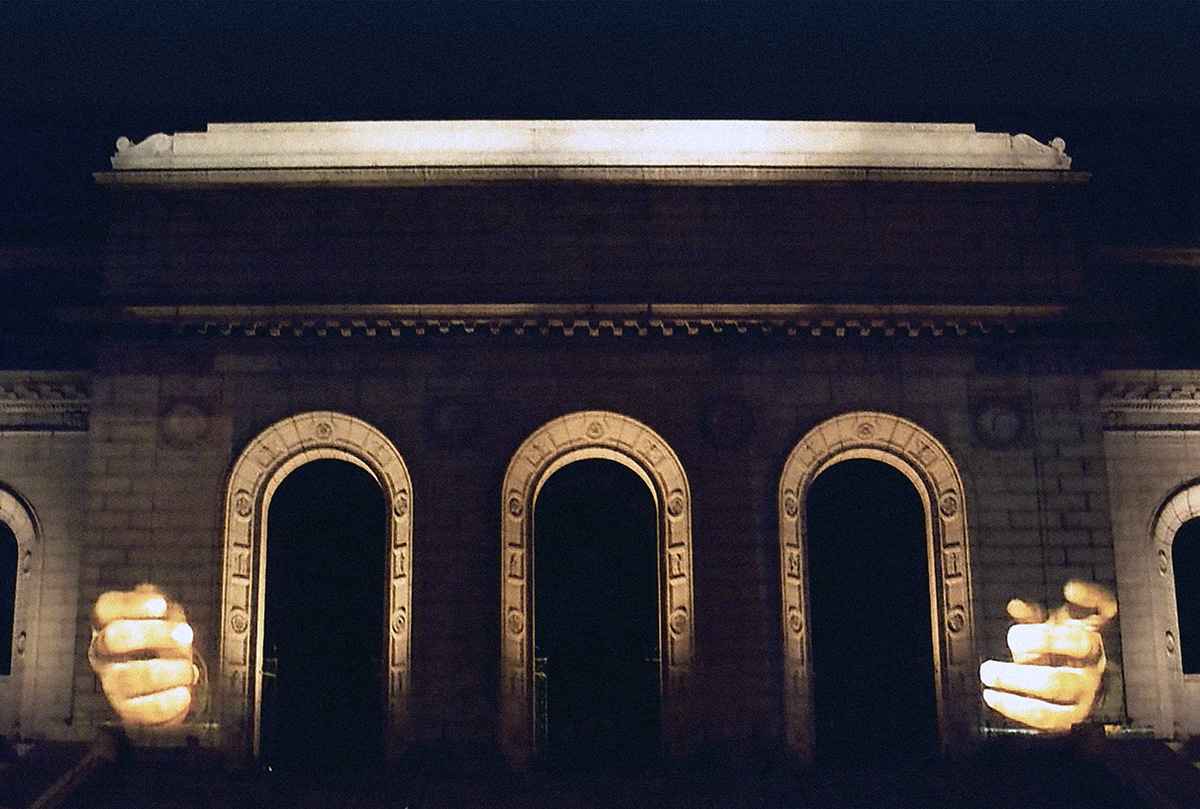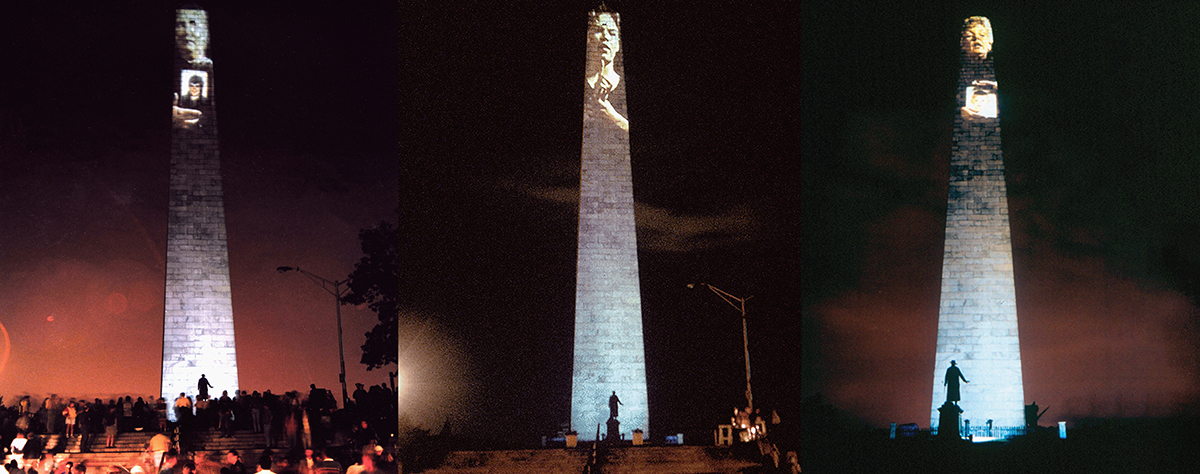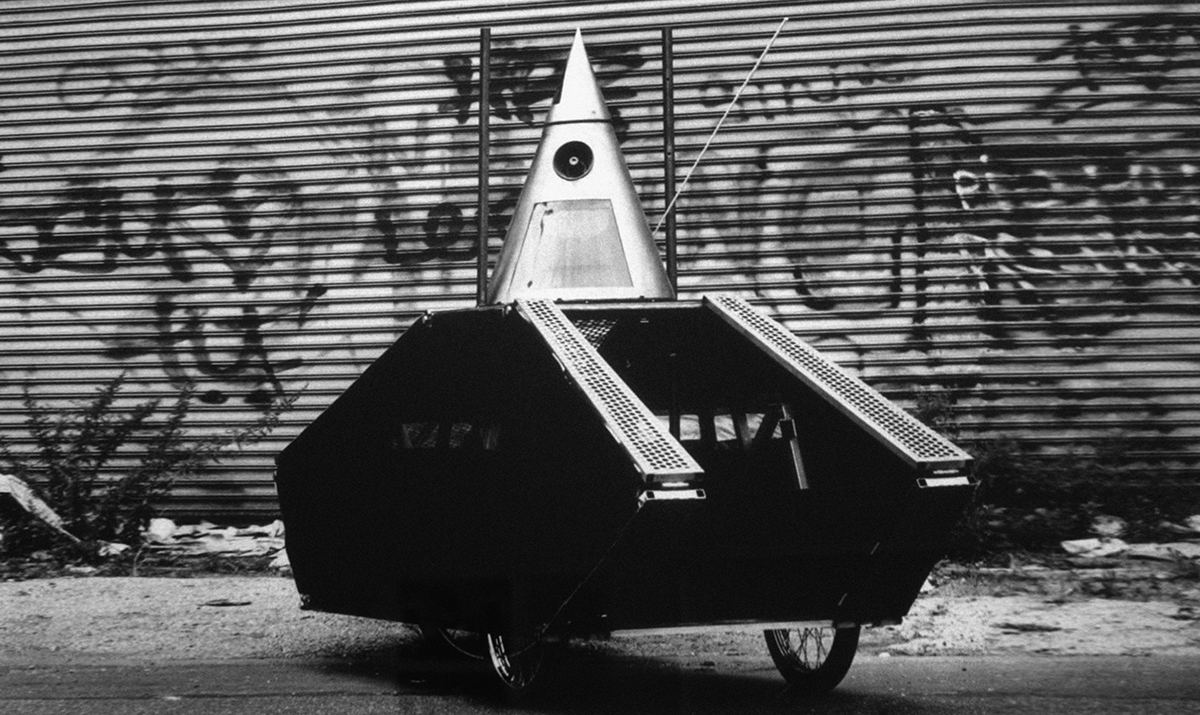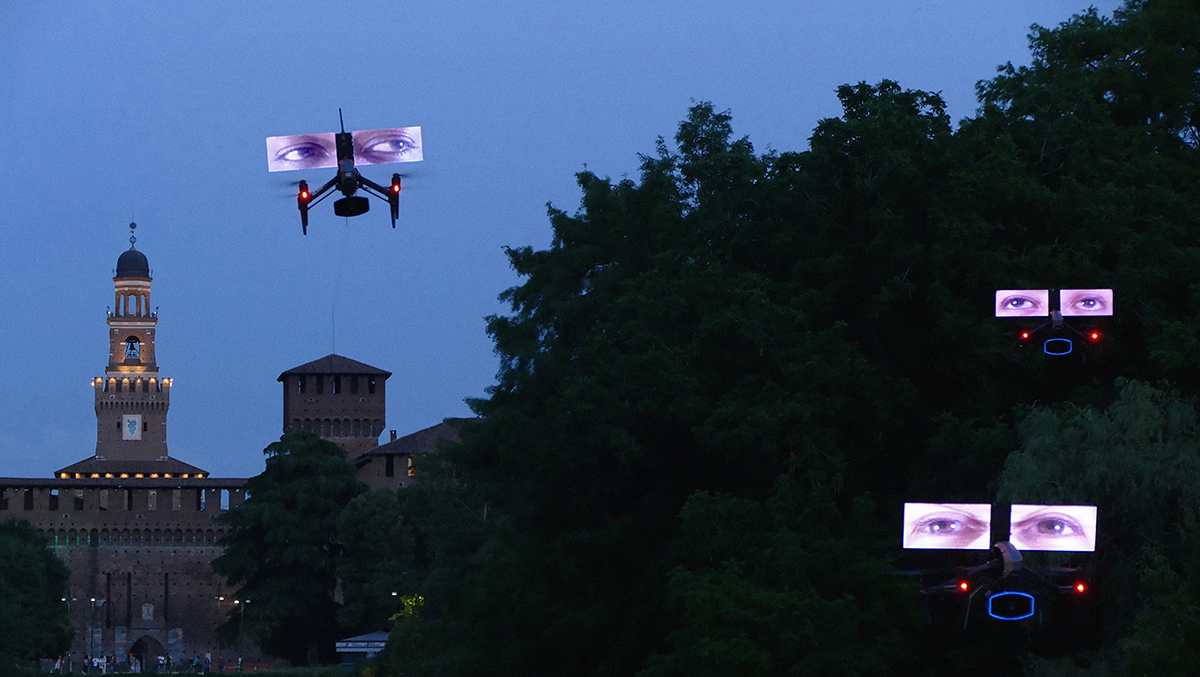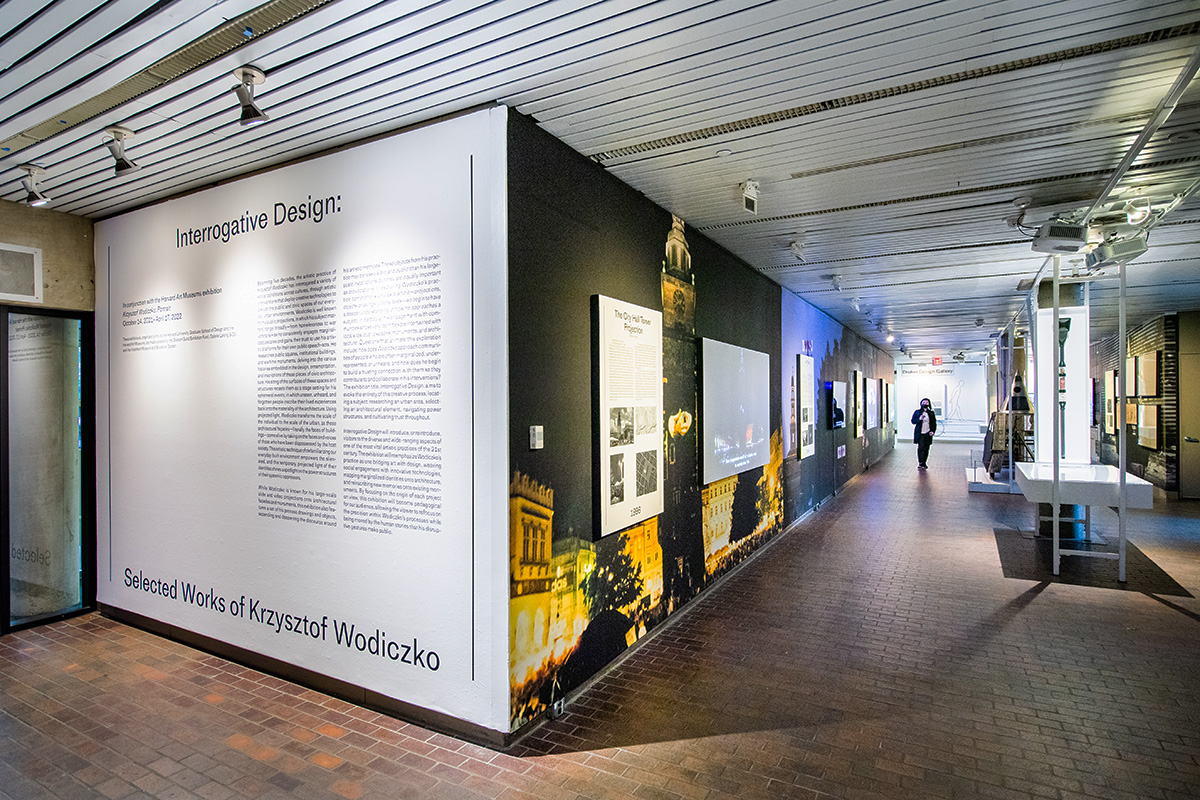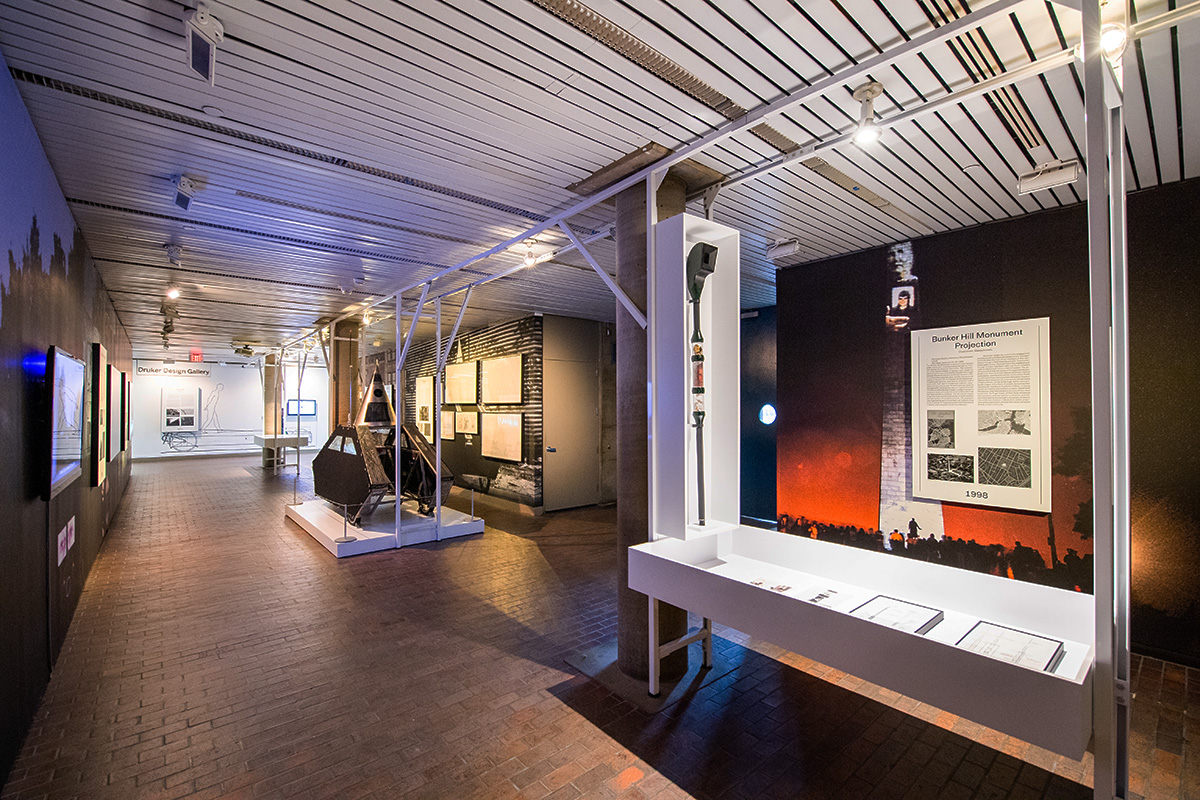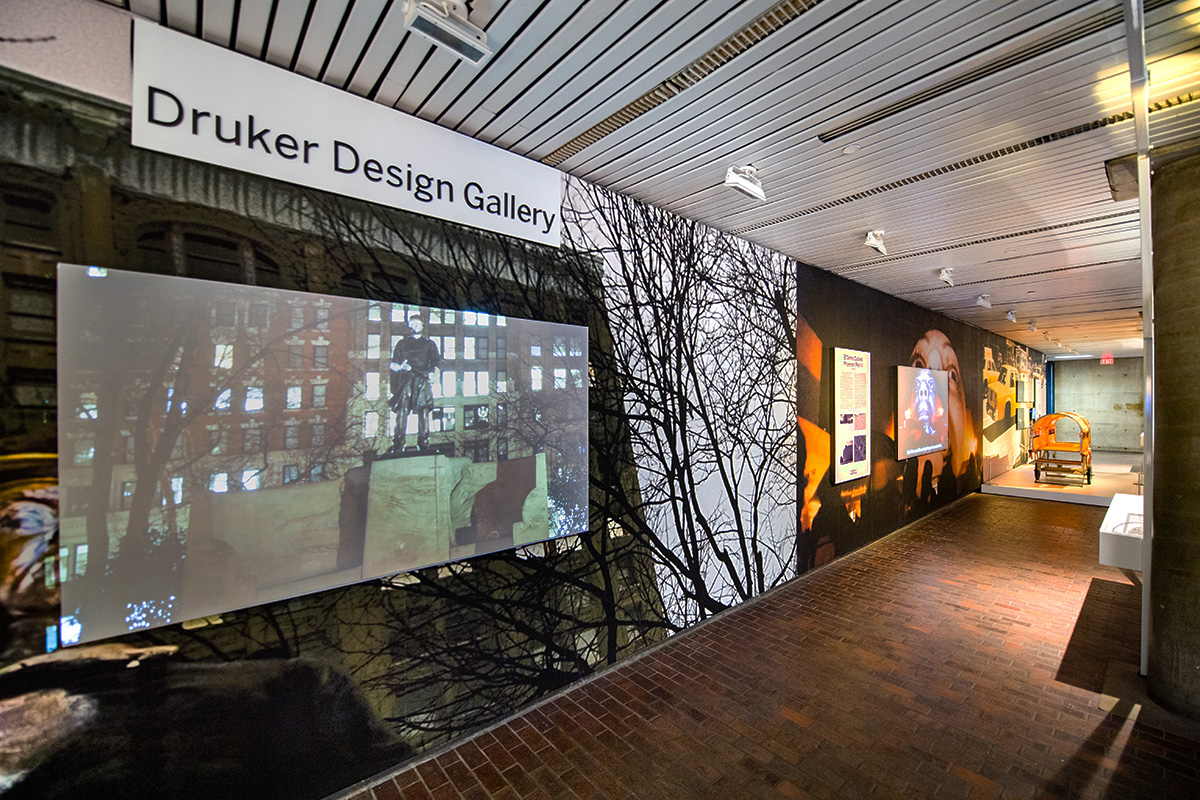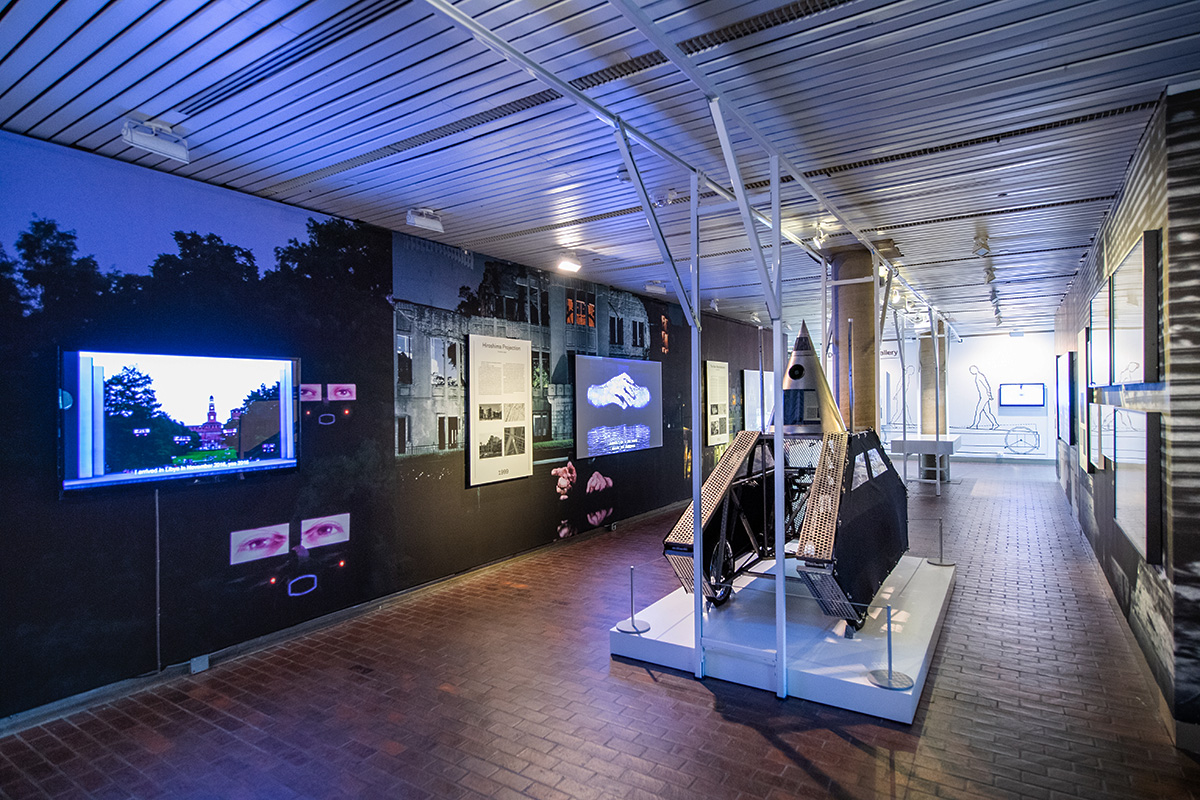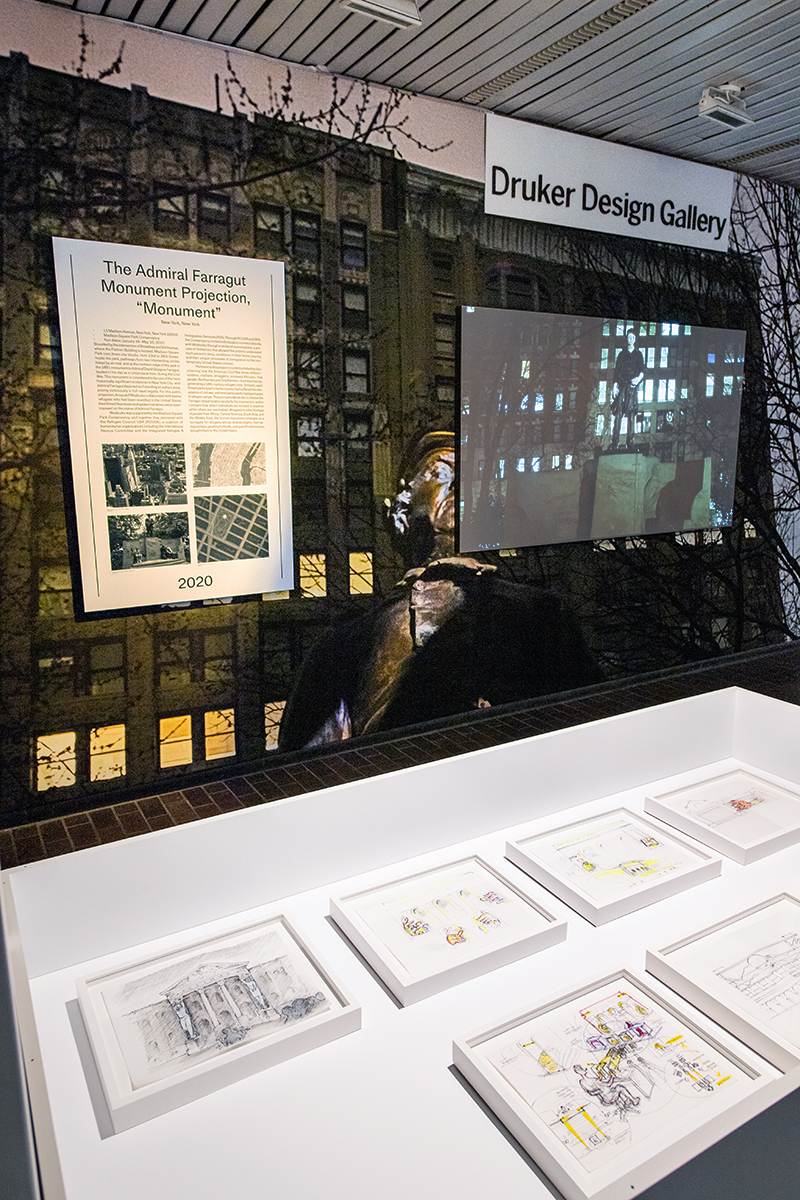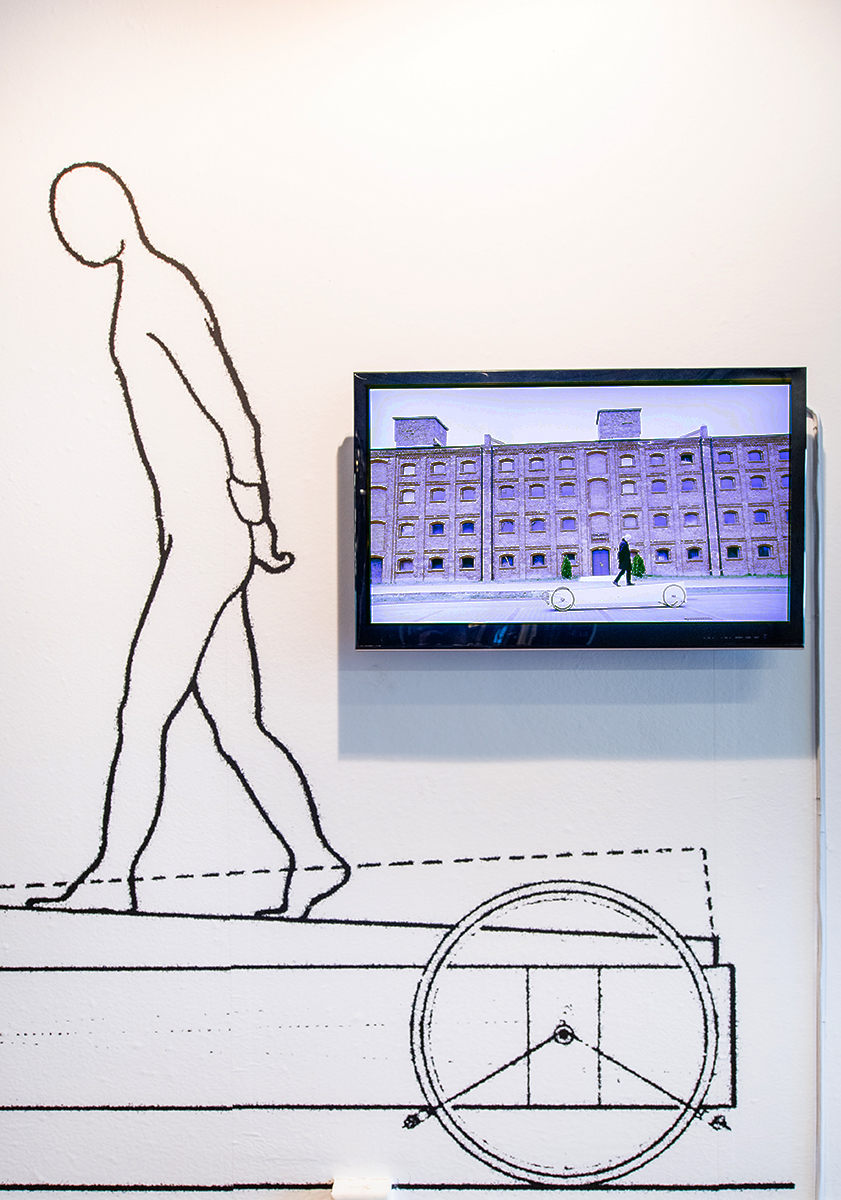Interrogative Design: Selected Works of Krzysztof Wodiczko
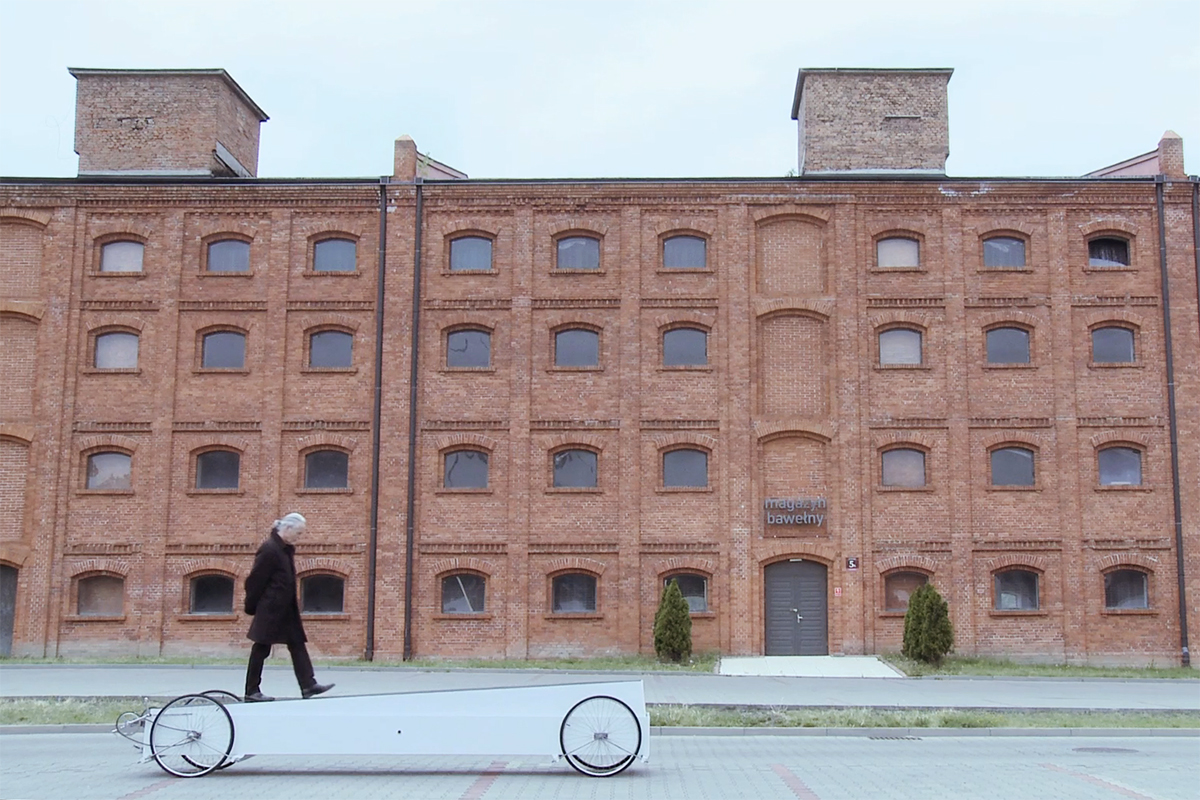
“Vehicle,” 1971, Warsaw, Poland. Courtesy of Krzysztof Wodiczko.
Materials for this exhibit provided by the artist, with unique edits specially produced for this project by GSD Exhibitions.
Spanning five decades, the artistic practice of Krzysztof Wodiczko has interrogated a variety of social conditions across cultures, through artistic interventions that deploy creative technologies to disrupt the public and civic spaces of our everyday urban environments. Wodiczko is well known for his public projections, in which his subject matters range broadly—from homelessness to war veterans—as he consistently engages marginalized peoples and gains their trust to use his artistic platforms for their own public speech-acts. He researches public squares, institutional buildings, and wartime monuments, delving into the various histories embedded in the design, ornamentation, and inscriptions of these pieces of civic architecture. His siting of the surfaces of these spaces and structures recasts them as a stage setting for his ephemeral events, in which unseen, unheard, and forgotten people inscribe their lived experiences back onto the materiality of the architecture. Using projected light, Wodiczko transforms the scale of the individual to the scale of the urban, as these architectural facades—literally the faces of buildings—come alive by taking on the faces and voices of those who have been dispossessed by the host society. This artistic technique of defamiliarizing our everyday built environment empowers the alienated, and this temporary, projected light of their identities shines a spotlight on the power structures of their systemic oppressors.
While Wodiczko is known for his large-scale slide and video projections onto architectural facades and monuments, this exhibition also features a set of his process drawings and objects, expanding and deepening the discourse around his artistic methods. These objects from his practice may be less visible and public than his large-scale installations, but they are equally important as provocations. In exploring Wodiczko’s practice comprehensively as a whole—projections, objects, drawings, videos, texts—we begin to have a deeper understanding of how he approaches a subject, in particular his engagement with communities whose very identities are intertwined with local sites, public spaces, monuments, and architecture. Questions that animate this exploration include: how does Wodiczko approach communities of people who are often marginalized, underrepresented, or unheard, and how does he begin to build a trusting connection with them so they contribute to and collaborate in his interventions? The exhibition title, Interrogative Design, aims to evoke the entirety of this creative process, locating a subject, researching an urban area, selecting an architectural element, navigating power structures, and cultivating trust throughout.
Interrogative Design will introduce, or reintroduce, visitors to the diverse and wide-ranging aspects of one of the most vital artistic practices of the 21st century. The exhibition will reemphasize Wodiczko’s practice as one bridging art with design, weaving social engagement with innovative technologies, mapping marginalized identities onto architecture, and reinscribing new memories onto existing monuments. By focusing on the origin of each project on view, this exhibition will become pedagogical for our audience, allowing the viewer to refocus on the precision within Wodiczko’s processes while being moved by the human stories that his disruptive gestures make public.
In addition to objects and works shown in the Druker Design Gallery, Harvard GSD’s Frances Loeb Library will feature a timeline of publications on Wodiczko’s practice, with accompanying photography of corresponding projects, including earlier slide projections in public space. The library will also feature an in-depth look into the process of the Voices of Bunker Hill Monument project, delving into the processes behind one of his local interventions.
Spring 2022 update: Druker Design Gallery will be accessible to visitors who are in compliance with the GSD’s current health and safety requirements. Please check the school’s reopening page for details on visitor guidelines and requirements. Visitor hours are from 8am – 6pm Monday through Friday.
Interrogative Design: Selected Works of Krzysztof Wodiczko
October 21, 2021 – April 8, 2022
In conjunction with the Harvard Art Museums exhibition:
Krzysztof Wodiczko: Portrait
October 14, 2021–April 17, 2022
These exhibitions, organized jointly by the Harvard University Graduate School of Design and the Harvard Art Museums, are made possible by the Graham Gund Exhibition Fund, Galerie Lelong & Co., and the Hirshhorn Museum and Sculpture Garden.
